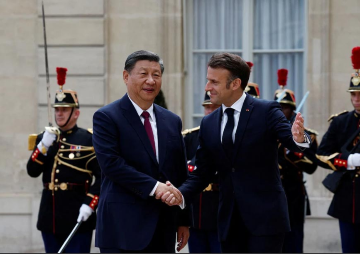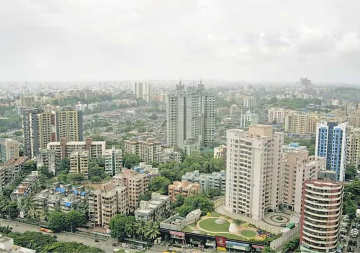The restrictions on non-essential movement in the first few months of the COVID-19 pandemic led to a significant decline in air pollution levels across India. It helped achieve 95 percent of National Clean Air Program targets for 2024 in just 74 days in Delhi, Mumbai, Kolkata and Chennai,[99] as emissions from the transport, construction and industrial sectors almost stopped and those from power plants reduced significantly.[100] Air pollution, however, is not a one-time, short-term crisis; it is a recurring problem that requires long-term, holistic solutions. If the lockdown showed anything, it is that air pollution levels can be brought down dramatically if India focuses its energy towards a green recovery model that is less emissions-intensive.
In the post-COVID-19 era, the urgency of reviving the economy must not sideline the implementation of NCAP. The key mitigation measures will reduce greenhouse gas emissions and thereby provide opportunities for climate co-benefits. These include transitioning to cleaner fuel for household use that would eradicate household emissions, switching to Bharat Stage VI vehicles and fuels, strict compliance for industrial, power plant and brick kiln emissions, and a sustained programme to stop open crop-waste burning. In the long term, NCAP also needs to be scaled-up in a significant manner to ensure that rapid economic growth and meeting National Ambient Air Quality Standards (NAAQS) are aligned.[101]
While current ambient PM2.5 monitoring in Delhi reveals high levels in urban areas, remote sensing, comprehensive air quality modeling, and emission inventories suggest large-scale excess above the NAAQS, also in rural areas.[102] It is important to coordinate urban-rural and inter-state responses, as emissions from urban and rural regions compound one another.[103] While the measures that have been taken by the Union and state governments have sought to address many of the key issues related to Delhi’s toxic air, the challenge is complex and will require sustained, multi-sectoral approaches that will be implemented over the long term.
About the Author
Arpan Chatterji is a Research Intern at ORF. He is a student of Resource Economics at the University of Massachusetts Amherst.
Endnotes
[a] Or petcoke, which is solid-carbon, coal-like material that results from oil refining. Cheaper fuels release significantly higher quantities of greenhouse gas emissions than coal and pose greater risks to health and environment.
[b] The critically polluted towns in Delhi’s neighbouring states, namely Uttar Pradesh, Haryana, and Rajasthan, are Mathura, Kanpur, Moradabad, Varanasi and Bulandshahr, Agra, Firozabad and Ghaziabad in Uttar Pradesh, Gurgaon in Haryana and Bhiwadi in Rajasthan. They continue to rely on cheaper and highly pollutive fuels, and have inadequate air quality monitoring mechanisms.
[c] DALYs refers to the sum of years of potential life lost due to premature mortality and the years of productive life lost due to disability. Firstly, the burden of disease is calculated by first combining information on the increased (or relative) risk of a disease resulting from exposure, with information on how widespread the exposure is in the population (in this case, the annual mean concentration of particulate matter to which the population is exposed). This allows calculation of the ‘population attributable fraction’ (PAF), which is the fraction of disease seen in a given population that can be attributed to the exposure, in this case the annual mean concentration of particulate matter. Applying this fraction to the total burden of disease (e.g. cardiopulmonary disease expressed as deaths or DALYs), gives the total number of deaths or DALYs that results from ambient air pollution.
[d] Delhi-NCR has a high number of global assignments, worldwide partnership workplaces, and fills in as a set up IT-BPM center, am industry whose workforce puts a high premium on everyday environments.
[e] Ozone gas occurs both on the ground level and Earth’s upper atmosphere (stratosphere). It is a highly reactive gas that merits short duration standard of only one hour to eight hours average, as opposed to 24-hour average for other pollutants.
[f] In the same period in 2018, it was 5 percent of the days overall.
[g] For instance, if PM reaches 100 micrograms per cubic meter, actions that have been identified for that level will begin, such as mechanised cleaning of roads and sprinkling of water.
[h] Liquefied petroleum gas meets the International Standards Organization and WHO recommendations for indoor air quality and can potentially help in achieving the WHO air quality standards within homes, but adoption and sustained use of clean fuels by households will be needed. The original target of 50 million households was met in August 2018, and the government has now increased the target to reach 80 million households through this scheme with a total budget of US$1·8 billion.
[i] L5N vehicles refer to three-wheel motor vehicles with a maximum speed exceeding 25kmph and motor power exceeding 0.25 kW. Their maximum weight is 1500 kilograms. N1 vehicles are light goods vehicles (maximum weight up to 3,500kgs).
[j] A scrapping bonus is a part of a government budget programme to promote the replacement of old vehicles with modern vehicles. In this scenario, people who own old vehicles are given a bonus to scrap their old vehicles for newer, more efficient vehicles.
[1] Sumit Sharma, Sumit Kumar Gautam, “Vehicular Emissions and Air Quality in India,” TERI, 2018
[2] Aidan Farrow, Kathryn A Miller and Lauri Myllyvirt. “Toxic Air: The Price of Fossil Fuels,” February 2020. Greenpeace Southeast Asia
[3] Sarath Guttikunda, “Air pollution in Indian cities: Understanding the causes and the knowledge gaps,” Centre for Policy Research, December 14, 2017.
[4] ‘A new wave of air pollution crises: what can be done?’, UN Environment Programme, November 13, 2019, https://www.unenvironment.org/news-and-stories/story/new-wave-air-pollution-crises-what-can-be-done
[5] Zhao, Pengjun, “Sustainable urban expansion and transportation in a growing megacity: Consequences of urban sprawl for mobility on the urban fringe of Beijing.” Habitat International 34, no. 2 (2010): 236-243.
[6] ‘Delhi pollution: Is air quality in the Indian capital now improving?’ BBC News, November 6, 2019, https://www.bbc.com/news/world-asia-india-49729291
[7] ‘ Haze Smothers Northern India’, NASA Earth Observatory, November 6, 2019, https://earthobservatory.nasa.gov/images/145827/haze-smothers-northern-india
[8] Srivastava S, Kumar A, Bauddh K, Gautam AS, Kumar S, ‘21-Day Lockdown in India Dramatically Reduced Air Pollution Indices in Lucknow and New Delhi, India’. Bull Environ Contam Toxicol. 2020;105(1):9-17. doi:10.1007/s00128-020-02895-w
[9] Pippa Neill, ‘Air pollution drops to record low in India following lockdown’, Air Quality News, March 30, 2020, https://airqualitynews.com/2020/03/30/air-pollution-drops-to-record-low-in-india-following-lockdown/
[10] Kritika Bansal, ‘Delhi Pollution: Air Quality Improves Marginally But Remains in Poor Category’, India.com, October 14, 2020, https://www.india.com/news/india/delhi-pollution-air-quality-index-smog-poor-category-4172532/
[11] ‘Delhi air quality: Lockdown cuts PM2.5, PM10 levels by half in national capital’, Financial Express, April 23, 2020, https://www.financialexpress.com/lifestyle/science/delhi-air-quality-lockdown-cuts-pm2-5-pm10-levels-by-half-in-national-capital/1937784/
[12] Surbhi Bhardwaj, ‘Lockdown Reduced Pollution In Delhi Temporarily, Long-Term Relief Needs Policy Changes’, IndiaSpend, June 24, 2020, https://www.indiaspend.com/lockdown-reduced-pollution-in-delhi-temporarily-long-term-relief-needs-policy-changes/
[13] Vatsala Shrangi, Soumya Pillai, ‘Air pollution dipped by 79% during lockdown in Delhi, on rise again’, Hindustan Times, June 6, 2020, ‘https://www.hindustantimes.com/cities/air-pollution-dipped-by-79-during-lockdown-in-delhi-on-rise-again/story-IiYzv36wFsqgnxQ7EdRWsJ.html
[14] Aarushi Koundal, ‘COVID-19 lockdown: Air quality in India’s major industrial cities improve by up to 60% compared to last year’, Economic Times, April 1, 2020, https://energy.economictimes.indiatimes.com/news/oil-and-gas/covid-19-lockdown-air-quality-in-indias-major-industrial-cities-improve-by-up-to-60-compared-to-last-yr/74931010
[15] Cheena Kapoor, ‘Air quality in India’s capital hits 8-month low’, AA, October 17, 2020, https://www.aa.com.tr/en/asia-pacific/air-quality-in-indias-capital-hits-8-month-low/2009820
[16] Singh, Siddharth, ‘The Great Smog of India’. Penguin Random House India Private Limited, 2018.
[17] Surbhi Bhardwaj, ‘Lockdown Reduced Pollution In Delhi Temporarily, Long-Term Relief Needs Policy Changes’
[18] Mahato, Susanta & Pal, Swades & Ghosh, Krishna (2020), ‘Effect of lockdown amid COVID-19 pandemic on air quality of the megacity Delhi, India’. Science of The Total Environment. 730. 139086. 10.1016/j.scitotenv.2020.139086
[19] Rumi Aijaz, ’The Herculean task of improving air quality: The case of Delhi and NCR’, ORF, https://www.orfonline.org/research/the-herculean-task-of-improving-air-quality-the-case-of-delhi-and-ncr-45459/
[20] Jethva, Hiren T., Duli Chand, Omar Torres, Pawan Gupta, Alexei Lyapustin, and Falguni Patadia, “Agricultural burning and air quality over northern India: a synergistic analysis using NASA’s A-train satellite data and ground measurements.” Aerosol and Air Quality Research 18, no. PNNL-SA-125481 (2018).
[21] Singh, Raghuveer, Dharam Bir Yadav, N. Ravisankar, Ashok Yadav, and Harpreet Singh, “Crop residue management in rice–wheat cropping system for resource conservation and environmental protection in north-western India.” Environment, Development and Sustainability 22, no. 5 (2020): 3871-3896.
[22] Sruthijith K K, ‘Delhi’s geography is truly cursed: Siddharth Singh, author of ‘The Great Smog of India’, Economic Times, November 19, 2019, https://economictimes.indiatimes.com/news/politics-and-nation/delhis-geography-is-truly-cursed-siddharth-singh-author-of-the-great-smog-of-india/articleshow/71985697.cms?from=mdr
[23] Lynn Jenner, ‘Smoke and haze continue to shroud most of India’, India Climate Dialogue, December 11, 2019, https://indiaclimatedialogue.net/2019/12/11/smoke-and-haze-continues-to-shroud-most-of-india/
[24] Jayashree Nandi, ‘Delhi surrounded by critically polluted industrial clusters, finds CPCB study’, Hindustan Times, November 22, 2019, https://www.hindustantimes.com/india-news/delhi-surrounded-by-critically-polluted-industrial-clusters-finds-cpcb-study/story-MSJj1Mwrep7aOMqE7dnB4L.html
[25] Srishti Choudhary, ‘Why is Delhi’s air so toxic?’, Livemint, November 3, 2019 https://www.livemint.com/news/india/why-is-delhi-s-air-so-toxic-11572782475997.html
[26] Dezan Shira et al, ‘Delhi’s Pollution Crisis and its Impact on Business’, Corporate Livewire, December 6, 2017, https://www.corporatelivewire.com/top-story.html?id=delhis-pollution-crisis-and-its-impact-on-business
[27] Samanwaya Rautray, ‘Supreme Court bans use of Pet Coke, furnace oil in Delhi-NCR’, Economic Times, October 25, 2017, https://economictimes.indiatimes.com/news/politics-and-nation/india-bans-use-of-dirtier-coal-alternative-in-new-delhi/articleshow/61205059.cms?from=mdr
[28] Bhandarkar, Shivaji, “Vehicular pollution, their effect on human health and mitigation measures.” Veh. Eng 1, no. 2 (2013): 33-40.
[29] Pankaj Jain, ‘Delhi pollution: Vehicles, not stubble burning, main cause, says Teri study’, India Today, November 1, 2018, https://www.indiatoday.in/india/story/delhi-pollution-vehicles-not-stubble-burning-main-cause-says-teri-study-1380557-2018-11-01
[30] ‘Number of vehicles on Delhi roads over 1 crore, with more than 70 lakh two wheelers: Economic survey’, Economic Times, February 23, 2019, https://auto.economictimes.indiatimes.com/news/industry/number-of-vehicles-on-delhi-roads-over-1-crore-with-more-than-70-lakh-two-wheelers-economic-survey/68128444’
[31] ‘Number of vehicles on Delhi roads over 1 crore, with more than 70 lakh two wheelers: Economic survey’
[32] ‘10.9 mn vehicles on Delhi roads, more than 7 mn two-wheelers: Report’, Business Standard, February 23, 2019, https://www.business-standard.com/article/pti-stories/number-of-vehicles-on-delhi-roads-over-1-crore-with-more-than-70-lakh-two-wheelers-economic-survey-119022300523_1.html
[33] Vishwa Mohan, ‘Why vehicular emissions are a constant in anti-pollution fight in Delhi’, Times of India, November 4, 2019, https://timesofindia.indiatimes.com/city/delhi/why-vehicular-emissions-are-a-constant-in-anti-pollution-fight/articleshow/71883289.cms
[34] Rizwan, S., Nongkynrih, B., & Gupta, S. K. (2013), “Air pollution in Delhi: Its Magnitude and Effects on Health”. Indian Journal of Community Medicine 38(1), 4–8. https://doi.org/10.4103/0970-0218.106617
[35] https://indianexpress.com/article/explained/explained-how-brick-kilns-contribute-to-rising-pollution-6124992/
[36] Bhat, Mohd Yousuf, “Environmental Problems of Delhi and Governmental Concern,” in Global Issues and Innovative Solutions in Healthcare, Culture, and the Environment, pp. 133-167. IGI Global, 2020.
[37] Ishita Jalan and Hem H. Dholakia (2019), ‘What is Polluting Delhi’s Air? Understanding Uncertainties in Emissions Inventory’, March.
[38] Abelsohn, A., & Stieb, D. M. (2011), ‘Health effects of outdoor air pollution: approach to counseling patients using the Air Quality Health Index’. Medecin de famille canadien, 57(8), 881–e287.
[39] Cohen, Aaron J., Michael Brauer, Richard Burnett, H. Ross Anderson, Joseph Frostad, Kara Estep, Kalpana Balakrishnan et al, “Estimates and 25-year trends of the global burden of disease attributable to ambient air pollution: an analysis of data from the Global Burden of Diseases Study 2015.” The Lancet 389, no. 10082 (2017): 1907-1918.
[40] Balakrishnan, Kalpana, Sagnik Dey, Tarun Gupta, R. S. Dhaliwal, Michael Brauer, Aaron J. Cohen, Jeffrey D. Stanaway et al, “The impact of air pollution on deaths, disease burden, and life expectancy across the states of India: the Global Burden of Disease Study 2017.” The Lancet Planetary Health 3, no. 1 (2019): e26-e39.
[41] Balakrishnan et al, “The impact of air pollution on deaths, disease burden, and life expectancy across the states of India: the Global Burden of Disease Study 2017.”
[42] Maji, Kamal Jyoti, Anil Kumar Dikshit, and Ashok Deshpande, “Disability-adjusted life years and economic cost assessment of the health effects related to PM 2.5 and PM 10 pollution in Mumbai and Delhi, in India from 1991 to 2015.” Environmental Science and Pollution Research 24, no. 5 (2017): 4709-4730.
[43] Alberini, Anna, Maureen Cropper, Nathalie B. Simon, and P. K. Sharma, ‘The health effects of air pollution in Delhi, India’. The World Bank, 1997.
[44] Kaiser, Jocelyn, “Mounting evidence indicts fine-particle pollution.” Science 307, no. 5717 (2005): 1858a-1861a.
[45] ‘Fine Particles (PM 2.5) Questions and Answers’, New York State Department of Health, December 14, 2020 https://www.health.ny.gov/environmental/indoors/air/pmq_a.htm
[46] Jiang, X. Q., Mei, X. D., & Feng, D. (2016), ‘Air pollution and chronic airway diseases: what should people know and do?’. Journal of Thoracic Disease 8(1), E31–E40. https://doi.org/10.3978/j.issn.2072-1439.2015.11.50
[47] ‘Finding a link between rising lung cancer incidence and air pollution’, Qrius, January 10, 2020,
[48] Bhattacharya, Sayantani, S. Sridevi, and R. Pitchiah, “Indoor air quality monitoring using wireless sensor network,” in 2012 Sixth International Conference on Sensing Technology (ICST), pp. 422-427. IEEE, 2012.
[49] Zhang, Xuelei, Lijing Zhao, Daniel Q. Tong, Guangjian Wu, Mo Dan, and Bo Teng. “A systematic review of global desert dust and associated human health effects.” Atmosphere 7, no. 12 (2016): 158.
[50] Farrow et al, “Toxic Air: The Price of Fossil Fuels”
[51] Srinivas Raman, ‘Delhi’s Air Pollution and its Impact on Business’, India Briefing, November 12, 2019, https://www.india-briefing.com/news/delhis-pollution-crisis-impact-business-15631.html/
[52] Vrishti Beniwal, ‘The intangible costs that Delhi’s dirty air carries for a slowing economy’, Economic Times, November 19, 2019, https://economictimes.indiatimes.com/news/economy/indicators/the-intangible-costs-that-delhis-dirty-air-carries-for-a-slowing-economy/articleshow/72119726.cms?from=mdr
[53] Farrow et al, “Toxic Air: The Price of Fossil Fuels”
[54]‘Air pollution, ecosystems and biodiversity’, UNECE, December 14, 2020, https://unece.org/air-pollution-ecosystems-and-biodiversity
[55] Datta, Divya, and Shilpa Nischal. Looking Back to Change Track. The Energy and Resources Institute (TERI), 2010.
[56] ‘CSE says ozone pollution has increased in Delhi this summer because of heatwave’, CSE India, June 19, 2019, https://www.cseindia.org/cse-says-ozone-pollution-has-increased-in-delhi-this-summer-because-of-heatwave-9513
[57] ‘CSE says ozone pollution has increased in Delhi this summer because of heatwave’
[58] Saxena, Pallavi, and Saurabh Sonwani, “Primary criteria air pollutants: environmental health effects,” in Criteria Air Pollutants and their Impact on Environmental Health, pp. 49-82. Springer, Singapore, 2019.
[59] Dennis R Decoteau, “Principles of plant science.” Environmental Factors and Technology in Growing Plants (2005): 49-66.
[60] Mahato, Susanta, Swades Pal, and Krishna Gopal Ghosh, “Effect of lockdown amid COVID-19 pandemic on air quality of the megacity Delhi, India.” Science of the Total Environment (2020): 139086.
[61] ‘Graded Response Action Plan: The Solution to Delhi’s Air Pollution’, AQI, November 9, 2018, https://www.aqi.in/blog/graded-response-action-plan-grap-the-solution-to-delhis-air-pollution/
[62] PP Sangal, “Why air pollution in Delhi-NCR hasn’t been tackled effectively,” The Hindu, March 6, 2020, https://www.thehindubusinessline.com/opinion/why-air-pollution-in-delhi-ncr-hasnt-been-tackled-effectively/article31081532.ece
[63] PP Sangal, “Why air pollution in Delhi-NCR hasn’t been tackled effectively”
[64] PP Sangal, “Why air pollution in Delhi-NCR hasn’t been tackled effectively”
[65] “Explained: What is GRAP, Delhi-NCR’s action plan as air pollution increases?,” Indian Express, October 11, 2020, https://indianexpress.com/article/explained/explained-what-is-grap-delhi-ncrs-action-plan-as-air-pollution-increases-6719746/
[66] Gupta, Anchal. “National Clean Air Programme of India: Challenge and Strategies.” (2020).
[67] Anjali Jaiswal, “India Launches a National Clean Air Program,” NRDC, January 18, 2019 https://www.nrdc.org/experts/anjali-jaiswal/india-launches-national-clean-air-program
[68] Anjali Jaiswal, “India Launches a National Clean Air Program”
[69] Anjali Jaiswal, “India Launches a National Clean Air Program”
[70] Anjali Jaiswal, “India Launches a National Clean Air Program”
[71] https://www.huffingtonpost.in/entry/what-happened-to-national-clean-air-plan_in_5e20226ec5b674e44b92d187 (Huffington Post closed down in India after November 24, 2020)
[72] Anumita Roychowdhury, ‘Union Budget 2020-21 promises Rs 4,400 cr for clean air; how, where and how soon?’, DownToEarth, February 2, 2020, https://www.downtoearth.org.in/blog/air/union-budget-2020-21-promises-rs-4-400-cr-for-clean-air-how-where-and-how-soon–69119
[73] Ashutosh Mishra, ‘Delhi odd-even scheme begins as air quality dips to 3-year low’, India Today, November 4, 2019, https://www.indiatoday.in/india/story/delhi-odd-even-scheme-to-start-today-as-air-quality-dips-to-3-year-low-1615420-2019-11-04
[74] Rohan Gupta, ‘Odd-even scheme: Before Delhi starts third leg, let’s see how the last two went,’ DownToEarth, September 13, 2019, https://www.downtoearth.org.in/news/air/odd-even-scheme-before-delhi-starts-third-leg-let-s-see-how-the-last-two-went-66721
[75] Center for Science and Environment, “Delhi has lost the air quality gains of odd and even scheme. Delayed winter will make pollution worse if quicker steps are not taken to sustain the gains, says CSE,” January 21, 2016, https://www.cseindia.org/delhi-has-lost-the-air-quality-gains-of-odd-and-even-scheme–delayed-winter-will-make-pollution-worse-if-quicker-steps-are-not-taken-to-sustain-the-gains-says-cse-6222
[76] Center for Science and Environment, “Delhi has lost the air quality gains of odd and even scheme. Delayed winter will make pollution worse if quicker steps are not taken to sustain the gains, says CSE”
[77] Berkeley Earth. 2018, “Air Quality Real-time Map.” Available at: http://berkeleyearth.org/air-quality-real-time-map/
[78] Sayantan Ghosh, ‘Clearing the Air: Why Delhi Needs the Odd-Even Scheme to Fight Pollution’, News18 India, November 12, 2019, https://www.news18.com/news/india/clearing-the-air-why-delhi-needs-the-odd-even-scheme-to-fight-pollution-2383473.html
[79] Nikhil Rampal, ‘Odds against odd-even, scheme could not improve Delhi’s air’, India Today, November 20, 2019, https://www.indiatoday.in/diu/story/odds-against-odd-even-scheme-could-not-improve-delhi-s-air-1620985-2019-11-20
[80] Dutta, Abhishek, and Wanida Jinsart, “Air Quality, Atmospheric Variables and Spread of COVID-19 in Delhi (India): An Analysis.” Aerosol and Air Quality Research 20.
[81] Gordon, Terry, Kalpana Balakrishnan, Sagnik Dey, Sanjay Rajagopalan, Jonathan Thornburg, George Thurston, Anurag Agrawal et al, “Air pollution health research priorities for India: Perspectives of the Indo-US Communities of Researchers.” Environment International 119 (2018): 100.
[82] Bhavyata Mahajan, ‘Why Delhi’s air pollution mission is in need of bipartisan politics’, ORF, April 10, 2020, https://www.orfonline.org/expert-speak/why-delhis-air-pollution-mission-is-in-need-of-bipartisan-politics-64392/
[83] Bhavyata Mahajan, ‘Why Delhi’s Air Pollution Mission Is In Need Of Bipartisan Politics – Analysis’, Eurasia Review, April 11, 2020, https://www.eurasiareview.com/11042020-why-delhis-air-pollution-mission-is-in-need-of-bipartisan-politics-analysis/
[84] India State-Level Disease Burden Initiative Air Pollution Collaborators (2019), ‘The impact of air pollution on deaths, disease burden, and life expectancy across the states of India: the Global Burden of Disease Study 2017’. The Lancet Planetary Health, 3(1), e26–e39. https://doi.org/10.1016/S2542-5196(18)30261-4
[85] Manisalidis, I., Stavropoulou, E., Stavropoulos, A., & Bezirtzoglou, E. (2020), ‘Environmental and Health Impacts of Air Pollution: A Review’. Frontiers in Public Health, 8, 14. https://doi.org/10.3389/fpubh.2020.00014
[86] Pillarisetti, Ajay, Dean T. Jamison, and Kirk R. Smith, “Household energy interventions and health and finances in Haryana, India: an extended cost-effectiveness analysis.” 2017.
[87] Puzzolo, E., H. Zerriffi, E. Carter, H. Clemens, H. Stokes, P. Jagger, J. Rosenthal, and H. Petach, “Supply considerations for scaling up clean cooking fuels for household energy in low‐and middle‐income countries.” GeoHealth 3, no. 12 (2019): 370-390.
[88] Randhir Gupta, ‘Why Delhi needs e-buses’, DownToEarth, March 27, 2018, https://www.downtoearth.org.in/blog/air/why-delhi-needs-e-buses-60035
[89] Gorham, Roger, ‘Air pollution from ground transportation: an assessment of causes, strategies and tactics, and proposed actions for the international community’. Tournesol Conseils, 2002.
[90] Sandeep Bangia, ‘New-age mobility: Accelerating the transition to electric — three suggestions,’ Financial Express, June 22, 2020, https://www.financialexpress.com/opinion/new-age-mobility-accelerating-the-transition-to-electric-three-suggestions/1998752/
[91] Anulekha Ray, ‘Nirmala Sitharaman suggests a ₹4,400 crore solution to Delhi pollution in Budget 2020’, Livemint, February 2, 2020, https://www.livemint.com/budget/news/budget-2020-sitharaman-has-a-rs-4-400-crore-solution-to-delhi-pollution-11580555466822.html
[92] ‘Budget 2019: Pollution control in focus, Environment Ministry gets Rs 2,954 crore’, Economic Times, July 5, 2019, https://economictimes.indiatimes.com/news/economy/policy/budget-2019-pollution-control-in-focus-environment-ministry-gets-rs-2954-crore/articleshow/70095085.cms?from=mdr
[93] Akshima Ghate, Dimpy Suneja, ‘Delhi EV policy’s twin boost: Faster EV adoption and improved air quality’, RMI India, August 27, 2020 https://rmi-india.org/delhi-ev-policys-twin-boost-faster-ev-adoption-and-improved-air-quality/
[94] ‘Govt notifies FAME-II scheme for clean mobility; to be rolled out from April’, Economic Times, March 0, 2019, https://auto.economictimes.indiatimes.com/news/industry/govt-notifies-fame-ii-scheme-for-clean-mobility-to-be-rolled-out-from-april/68324899
[95] Akshima Ghate, Dimpy Suneja, “Delhi EV policy’s twin boost: Faster EV adoption and improved air quality,” CNBC, August 27, 2020, https://www.cnbctv18.com/auto/delhi-ev-policys-twin-boost-faster-ev-adoption-and-improved-air-quality-6754021.htm
[96] Akshima Ghate, Dimpy Suneja, “Delhi EV policy’s twin boost: Faster EV adoption and improved air quality”
[97] Santosh Harish, Shibani Ghosh, ‘The interplay between the pandemic and pollution | Analysis’, Hindustan Times, July 16, 2020, https://www.hindustantimes.com/analysis/the-interplay-between-the-pandemic-and-pollution/story-dk5zkame5pnMXskSLM6MQJ.html
[98] Abhijith, K. V., Prashant Kumar, John Gallagher, Aonghus McNabola, Richard Baldauf, Francesco Pilla, Brian Broderick, Silvana Di Sabatino, and Beatrice Pulvirenti, “Air pollution abatement performances of green infrastructure in open road and built-up street canyon environments–A review.” Atmospheric Environment 162 (2017): 71-86.
[99] Esha Roy, ‘Air pollution dropped significantly during 74-day lockdown period: Study’, Indian Express, July 4, 2020, https://indianexpress.com/article/india/drastic-fall-in-pollution-during-74-days-of-lockdown-analysis-6488906/
[100] Sagnik Dey, Joshua Apte, ‘Clean air can help minimise risks of Covid infections as the economy opens up’, Indian Express, June 29, 2020.
[101] ‘India’s pollution control policies unlikely to improve air quality: Study’, Outlook India, March 31, 2019.
[102] ‘More than 670 million Indians would breathe poor quality air in 2030 despite compliance with pollution control policies: CEEW-IIASA study’, CEEW, March 29, 2019.
[103] ‘India’s pollution control policies unlikely to improve air quality: Study’, Economic Times, March 31, 2019.

 PDF Download
PDF Download

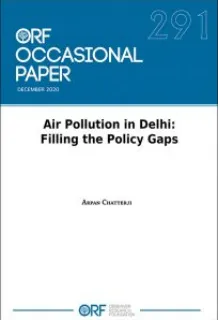

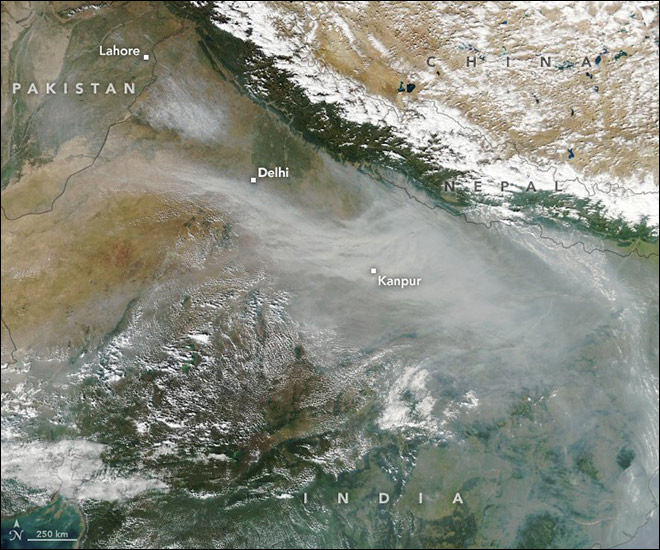
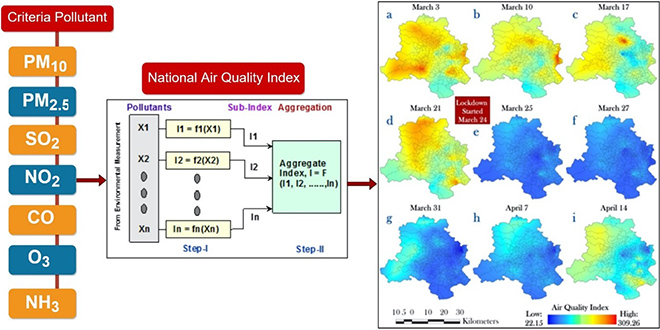
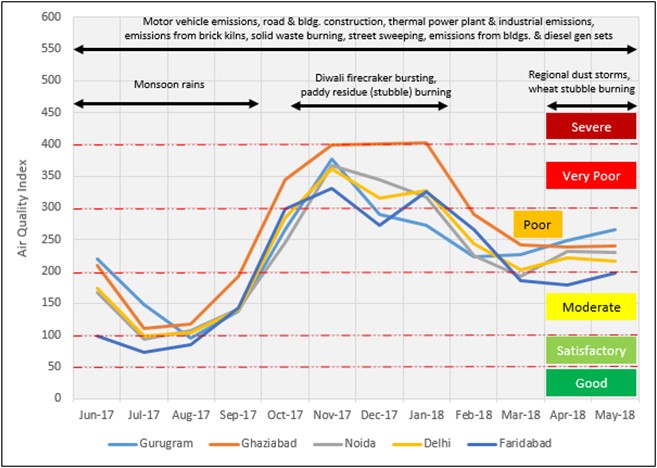
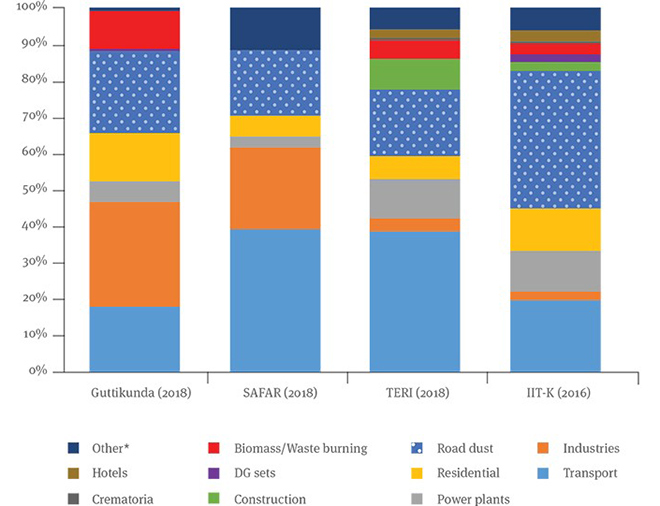
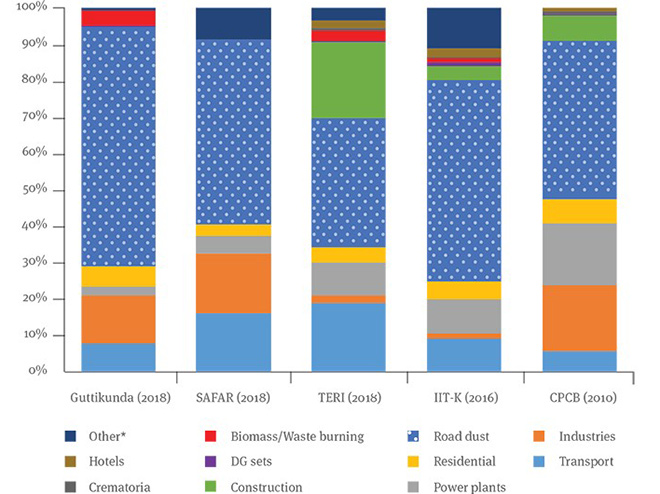
 PREV
PREV

